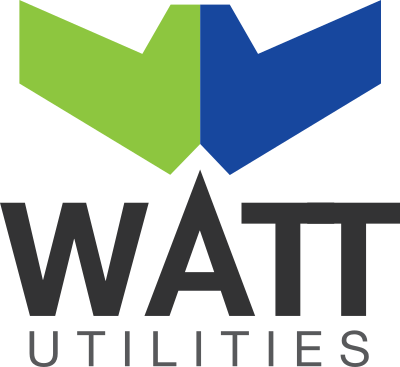
Australia stands at the forefront of a remarkable energy transformation. At the Australian Energy Week Conference 2025, held from 17-20 June at the Melbourne Convention and Exhibition Centre, industry leaders gathered to discuss the path forward for Australia’s energy future. Among the key speakers, Danielle Beinart, Executive General Manager of Networks & Technical at the Australian Energy Market Commission (AEMC), delivered a compelling keynote address that outlined the essential reforms needed to create a truly consumer-driven energy system.
Australia’s energy sector is experiencing unprecedented change as the nation works toward its ambitious goal of achieving net zero emissions by 2050. During her address, Beinart drew a striking comparison, likening this energy transformation to the complexity and ambition of the Apollo moon landing program. The Australian energy landscape is being reshaped by three powerful forces: decarbonisation, digitisation, and decentralisation.
Central to this transformation is the rapid growth of Consumer Energy Resources (CER). These technologies include rooftop solar panels, home batteries, and electric vehicles that put energy generation and storage directly in consumers’ hands. The growth of CER is changing how Australians will produce, consume, and manage energy in their daily lives.
Current projections suggest that by 2050, CER could account for nearly half of Australia’s National Energy Market (NEM). To put this in perspective, industry forecasts indicate that approximately 80% of Australian homes could have rooftop solar installations, while electric vehicles are expected to represent the vast majority of the vehicle fleet by mid-century.
One of the most compelling aspects of Beinart’s presentation was her analogy to the telecommunications industry’s pricing evolution. Just as mobile phone plans transformed from complex, usage-based billing to simple, predictable packages, the energy sector needs a similar revolution in how it prices and presents services to consumers.
The current energy pricing system, with its complex tariff structures and variable charges, often leaves consumers confused and unable to make informed decisions about their energy use. The AEMC recognises that for the energy transition to succeed, pricing must become more transparent, predictable, and aligned with consumer needs and behaviours.
The integration of consumer energy resources represents one of the biggest opportunities in Australia’s energy future. According to research by energy consultancy Energeia, effective CER integration could deliver substantial system benefits valued at up to $45 billion by 2050. These benefits come from reduced need for traditional grid infrastructure, improved system efficiency, and better use of renewable energy resources.
However, realising these benefits requires careful design of pricing frameworks that encourage optimal use of consumer energy resources while ensuring that all consumers (whether they actively participate in the energy transition or not) share in the benefits of a more efficient system.
Network tariffs cover the cost of electricity poles, wires, and grid infrastructure. These charges are a critical component of every energy bill. Currently under review by the AEMC, these tariffs need to evolve to reflect the realities of a modern, two-way energy system where consumers both draw power from and feed energy back into the grid.
The Commission is exploring smart reforms that leverage new technologies to create simpler, more predictable billing arrangements. Rather than the current complex time-of-use tariffs that many consumers struggle to understand, future tariff structures could automatically optimise for system efficiency while providing clear, predictable costs for consumers.
These reforms aim to reward consumers and businesses for actions that support overall system efficiency, such as using energy when renewable generation is abundant or providing stored energy back to the grid during peak demand periods. By aligning individual incentives with system-wide benefits, reformed network tariffs can play a crucial role in creating a more dynamic and responsive energy market.
For Australian businesses, particularly small and medium enterprises, these energy market reforms present both opportunities and considerations. As the energy system becomes more flexible and consumer-focused, businesses will have greater opportunities to optimise their energy costs through strategic use of on-site generation, energy storage, and demand management.
The shift toward more predictable pricing structures will also make it easier for businesses to budget for energy costs and evaluate investments in energy efficiency or renewable energy technologies. However, staying informed about these changes and understanding how to navigate the evolving energy landscape will be crucial for maximising these benefits.
Danielle Beinart’s keynote at the Australian Energy Week Conference 2025 highlighted that Australia’s energy transformation is about creating a system that works better for consumers while delivering the environmental outcomes needed for a sustainable future. The reforms being developed by the AEMC represent a thoughtful approach to managing this transition, balancing innovation with reliability and ensuring that the benefits of change are shared across the community.
As these reforms take shape over the coming years, they will create new opportunities for consumers and businesses to engage with the energy system in ways that were previously impossible. The challenge now is ensuring that all Australians can participate in and benefit from this energy transformation, regardless of their current level of engagement with energy technology.
Navigate the changing energy landscape with expert guidance. Our team can help you understand how these market reforms might affect your business and identify opportunities to optimise your energy costs.
Visit our Energy Cost Reduction page or Contact Us for tailored support.
Speak to an Energy ManagerThis article is based on insights from the Australian Energy Week Conference 2025, held at the Melbourne Convention and Exhibition Centre.



Fields marked with * are required.

Fields marked with * are required.